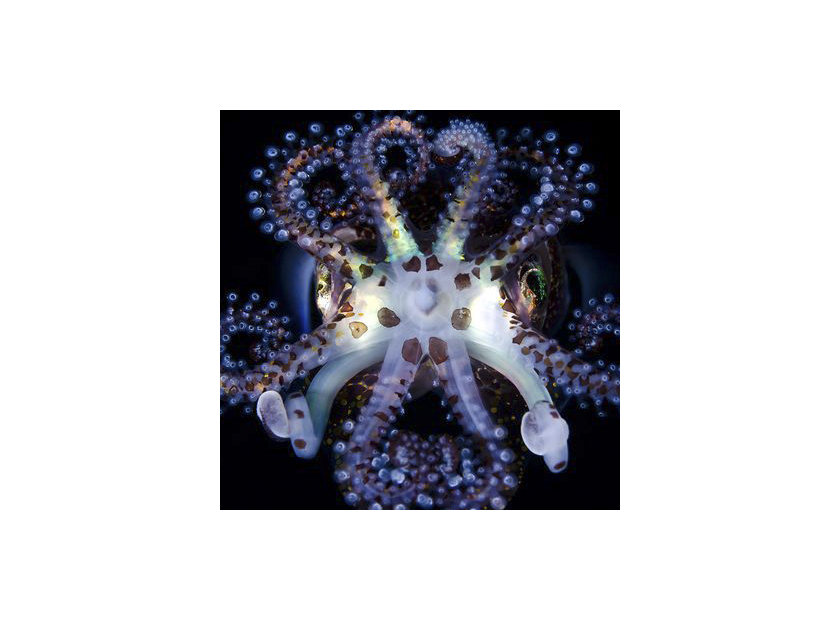How bio-luminescence will light our way to a brighter future.
Throughout history there has been an ongoing conversation about the mystical “living light” that shows up fluttering in the sky, churning beneath the ocean waves, and dancing across the forest floor. Stories have been passed down depicting this fantastical phenomenon stemming from all different cultures and histories. From ocean explorers that discovered the deep sea dwelling animals that illuminate the darkness, Aristotle’s reports of “cold light,” and Shakespeare’s references to the “ineffectual fire” of the glow-worm, bioluminescence has been talked about in many different lights. Modern science has come a long way in solving the mystery of bioluminescence and its existence in nature. We will be discussing one small segment of this ever branching topic: bioluminescent bacteria. After all, who doesn’t love a good bacteria story?

Bioluminescent bacteria are light-producing organisms that are found in abundance, either free-living in seawater or living in symbiosis with a host organism. You may have heard of the phenomenon known as the “milky seas” effect. Though science has not been able to absolutely prove that there are enough bacteria to create such a long and lengthy glow in the ocean's tide, there are studies that lead us to believe the culprit of this light show to be the bioluminescent bacteria, Vibrio harveyi. This gram-negative, rod-shaped bacterium is found swimming freely in tropical marine waters and can be found in the gut microflora of marine animals. The effect of this massive group of bacteria giving off a light in such a large part of the ocean has allowed scientists to view the ~6000 square miles of glowing water from space!
Another popular example of bacteria responsible for bioluminescence is best told through the story of the Hawaiian bobtail squid (Euprymna scolopes). This squid lives in symbiosis with a bioluminescent bacteria called Alivibrio fischeri.
Cool, right? A. fischeri is a gram-negative rod-shaped bacterium that is found globally in marine environments and animals. It dwells within the photophore (a light-producing organ) inside of the Hawaiian bobtail squid’s mantle. The relationship between bioluminescent bacteria and marine animals is an advantage for both organisms. This squid has the help of luminous bacteria to communicate, attract prey, and defend themselves against predators, and A. fishceri gets to live rent free within its host and has access to around-the-clock buffet.

As interesting as both of these examples are, what is most intriguing about this subject is what humans have decided to do with the information we have extracted from natural luminosity. As a result, science has found several uses for bioluminescence.
Green Fluorescent Protein (GFP) was discovered in the jellyfish Aequorea and has been modified to make biosensors in that express GFP. This demonstration is proof that a gene can be expressed in selected organs or cells within a given organism. Scientists Roger Y. Tsien, Osamu Shimomura, and Martin Chalfie were awarded the 2008 Nobel Prize in Chemistry for their discovery and development of the green fluorescent protein.
Bioluminescent imaging (BLI) is a powerful methodology that has become a tool for molecular imaging of small animals in a laboratory setting. This allows us to study ongoing biological processes in vivo at a noninvasive level and facilitates live analysis of disease processes at a molecular level. BLI can be imaged as deep as several centimeters within the tissue, allowing organ-level resolution. Essentially, this organic technology has allowed us to monitor processes like transgene expression, the progression of infection, tumor growth and metastasis.

Outside of the medical field, a French company called Glowee has begun prototyping a revolutionary way to utilize bioluminescent bacteria to, literally, light up our streets. They have used the genes coding for bioluminescence with symbiotic squid as their model, to engineer and grow bioluminescent bacteria. They then encapsulate bacterium into a transparent shell filled with a medium composed of the nutrients to create an alternative solution to electric lighting. The idea of using organic material for everyday resources could essentially change the way that we view lighting and design. As we move towards a greener world, innovations such as these will strip away the limitations that we are facing today.
Our admiration and understanding of this phenomenon makes it all the more gratifying when we hone the power that the world around us naturally provides. Like those before us, we will marvel at the beauty of bioluminescence, and continue to seek out the extraordinary capabilities that it offers now, and for the future.







